Cherry Blossoms 2010: Kyoto Report (4/7)
by japan-guide.com
This is the official japan-guide.com cherry blossom report for 2010. Please visit also our guide to cherry blossoms for more general information about cherry blossoms and this year's forecasts and our schedule of upcoming reports.
| previous post |
| next post |
2010/04/07 - Kyoto Report
by francois
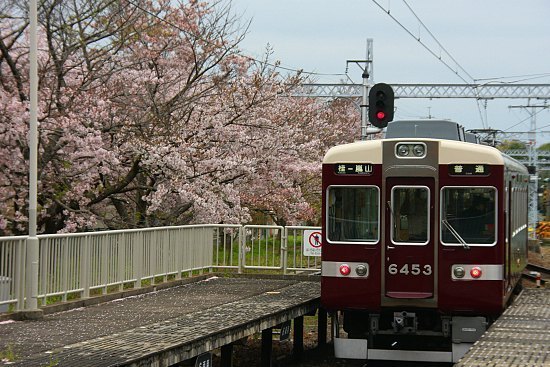
Though the japan-guide staff has made five previous visits to Kyoto during this year's cherry blossom season, this is my first time reporting from the city. When Schauwecker last visited on April 4 many trees were at full bloom. Most of the trees remain at full bloom, but with every strong gust of wind more petals are taken to the ground, so I think that many trees will be beyond the peak by this weekend. Nonetheless, there should still be a fair amount of flowers on the trees, and there are also many spots in the city that are famous for their late blooming cherry trees.
Arashiyama
April 7, 2010 - petals starting to fall
I began the day in Arashiyama, entering the area from the Hankyu Arashiyama Station in the south. I gradually walked through Nakanoshima Park and across the Togetsukyo Bridge before leaving from the Keifuku Arashiyama Station to visit some more centrally located spots. Without travelling too far into the area I was able to see a lot of nice trees, especially in Nakanoshima Park.
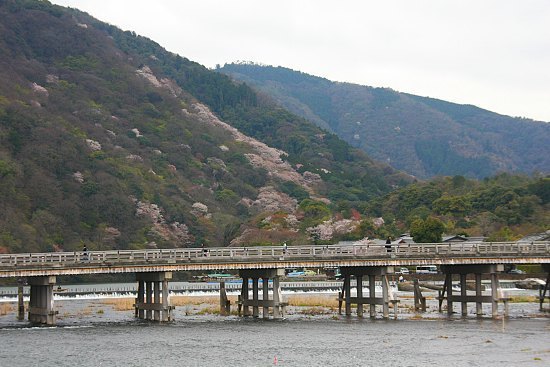
The cherry trees at Arashiyama are presently at full bloom, and should remain so for a few more days. The trees have not lost too many petals yet, so the flowers seem to be still quite strongly attached to the branches. Nonetheless, the petals are indeed starting to fall, so the number of cherry blossoms at Arashiyama will continue to decline.
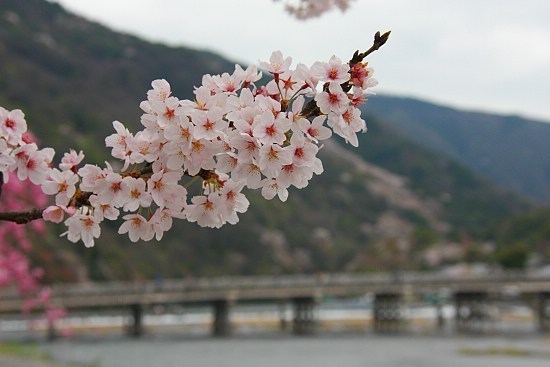
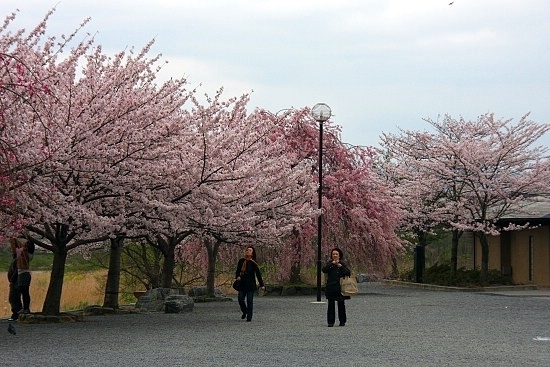
Ninnaji Temple
April 7, 2010 - about to open
Ninnaji Temple is famous for a particular species of cherry tree called omuro sakura that blooms later than most other cherry trees. There is a grove of omuro trees on the temple grounds that is composed of about 200 trees, and there are tables scattered among them for cherry blossom viewers.
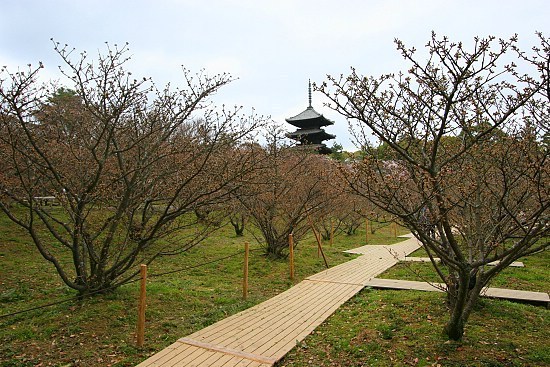
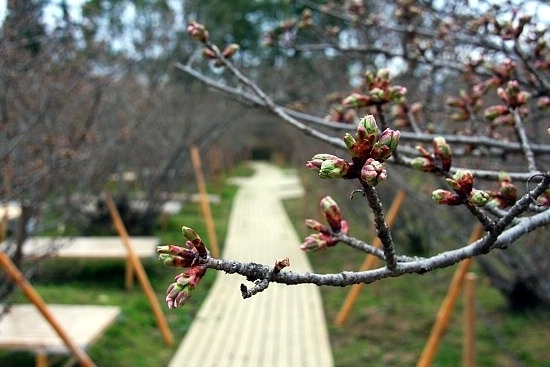
The omuro trees are just opening, and there are only a handful of trees that are showing any open flowers at all. With good weather the flowers should be approaching full bloom in a week.
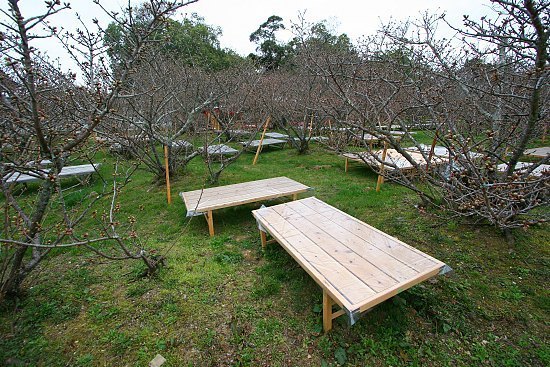
There are quite a few other cherry trees at Ninnaji Temple scattered about the temple grounds. The somei yoshino trees are at full bloom, and can be found throughout the temple, and there are quite a few of them in the temple's north-western area.
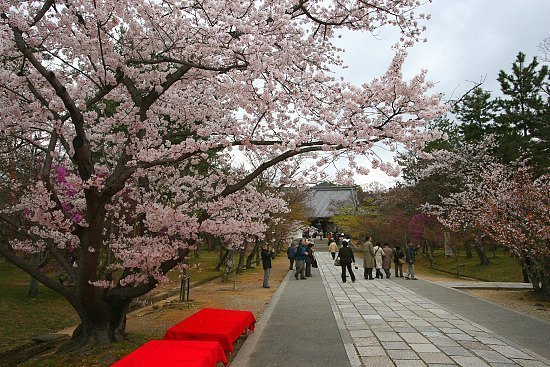
Philosopher's Path
April 7, 2010 - petals starting to fall
In the afternoon I went to see the state of the cherry blossoms at a couple of sites in Eastern Kyoto, starting with the Philosopher's Path. The path stretches about two kilometers along a small canal and there are cherry trees almost the entire length of the walk.
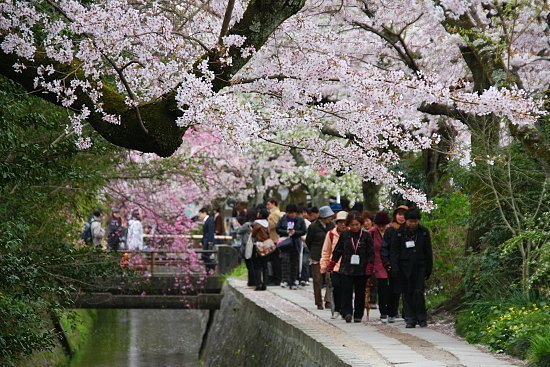
When Scott last visited the site on April 2 the trees were approaching full bloom. Since that time full bloom has been reached and the area was still at full bloom when I visited today. However, the petals are falling quite consistently along the path, so it is likely that within the next couple days many sections of the path will be beyond the peak of the cherry blossom season.
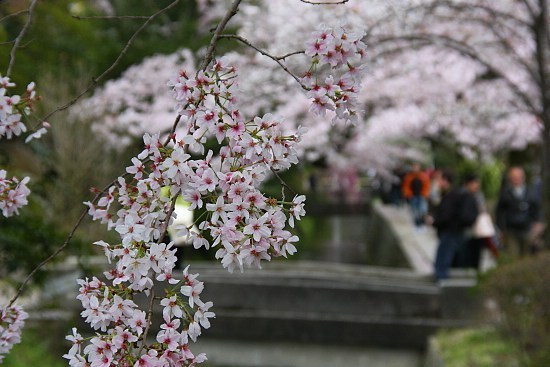
One surprise I found today was that a large section of the walkway is closed until next year. Beginning at the north, for almost a quarter of the path the stone walkway directly beside the canal is closed off to visitors. Because of damage to the trees beside the canal, the city has decided to let them recover for a year. For the closed section of the path, visitors must walk on a small road just beside that is lined with shops. The cherry trees still hang overhead and I did not find that the closure had a dramatic effect on the enjoyment of the area.
Heian Shrine
April 7, 2010 - approaching full bloom (50-80%)
From the southern end of the Philosopher's Path I walked for about 15 minutes to my last destination of the day, Heian Shrine. In terms of cherry blossoms, the shrine is most famous for the beni shidare cherry trees in the gardens behind the main shrine building. These cherry trees are a late blooming variety compared to the somei yoshino trees, and have the long drooping branches of the shidare (weeping) cherry trees. The colour of the beni shidare's blossoms is also worth noting, as it is darker than most other cherry blossoms.
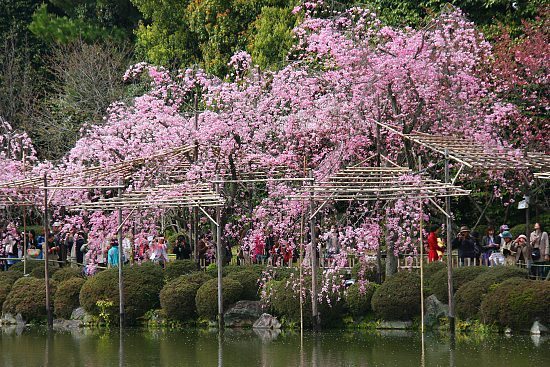
When Schauwecker visited the shrine three days ago on April 4 many of the beni shidare trees had just over 50% of their flowers open, and Schauwecker predicted the flowers to be at full bloom within three days with warm weather. Since there was a bit of cold weather, the trees are just before full bloom and should pass the 80% mark tomorrow.
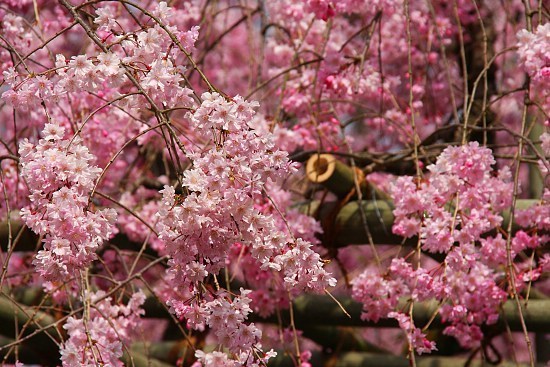
Also starting tomorrow are four consecutive nights of evening illuminations in the gardens that include live music. The entry during the illumination period is 2000 yen and it runs from 18:15 to 21:00. There will be a man playing the ocarina on Thursday and Friday, a guitarist on Saturday, and a pianist on Sunday.
| previous post |
| next post |
|
List of Posts:
2010/05/14 - Hakodate Report 2010/05/13 - Matsumae Report 2010/05/06 - Kakunodate Report 2010/05/05 - Hirosaki Report 2010/04/25 - Takizakura Report 2010/03/30 - Nagoya Report |
Questions? Ask in our forum.